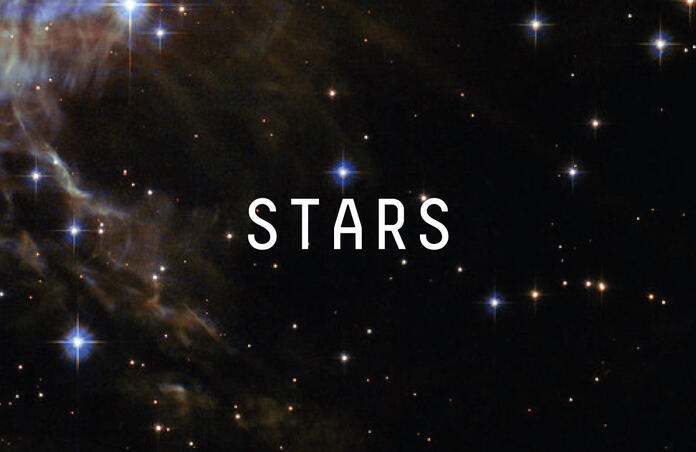What is a Star?

A star is a very hot and luminous object, so luminous that we can see some of them which are thousands of lightyears away with our naked eye. It is powered by nuclear fusion, a process that occurs in its core. For a large part of the star’s lifetime, around 90%, it is hydrogen burning that dominates. Protons (i.e. Hydrogen nuclei) are merged together to form Helium nuclei, releasing energy in the form of heat and electromagnetic radiation, which reaches us partly as visible light.
Most of the time, stars are in hydrostatic equilibrium. This complicated expression designates something quite simple – it’s a balance between two forces, namely the pressure of the gas pushing outwards from the core shell and gravity pulling inwards. The latter is due to the star’s mass, and the pressure is caused by the particles moving at high speed because of the high temperatures.
Mass is a key factor to tells us how a star will evolve: the more massive, the faster it will use up its Hydrogen to produce Helium. This is due hydrostatic equilibrium again, which tells us that the internal pressure will have to balance the larger mass via an increase in the temperature through the burning of more fuel. Below, you can see a stellar classification diagram, known as Hertzsprung-Russell diagram, based on the temperature as well as the luminosity of stars. Note that blue stars are the hottest and red stars the coolest, unlike what the labels on your water tap may say!

Main sequence stars like the Sun are the ones burning Hydrogen. There are also other types of stars, like the impressive Giants and Supergiants. These are what stars become later in their lives; our Sun will eventually become a red giant in a few billion years, and stars which are already more massive from birth can become supergiants.
You could say that in the last part of their lives, all stars tend toward the top right corner of the H-R diagram - let me stress that it’s the surface temperature that decreases, since when the star expands, the energy gets spread over a greater surface area. Once it has accumulated enough Helium in the core and it’s hot enough for Helium fusion to begin, a star will come out of hydrostatic equilibrium, expand and undergo the burning of other elements. Hydrogen burning may still continue in a shell around the core, where the temperature is sufficient for the protons’ fusion but not for Helium burning. Therefore, this shell will have its own hydrostatic equilibrium.
Subsequently, Carbon burning, Oxygen burning, and so on and so forth, can occur in the core of the most massive stars. They already have higher temperatures, continue to heat up and expand until becoming supergiants, enabling the process of fusion to start for the next element. Again, this will lead to the formation of additional shells around the core for each burning stage. However, because it would require more energy to make them than gets released, elements heavier than Iron don’t get produced like this – but that’s a story for another time.
Cover Image: "Hubble Watches Super Star Create Holiday Light Show" by NASA
Images credits:
Richard Powell - The Hertzsprung Russell Diagram
